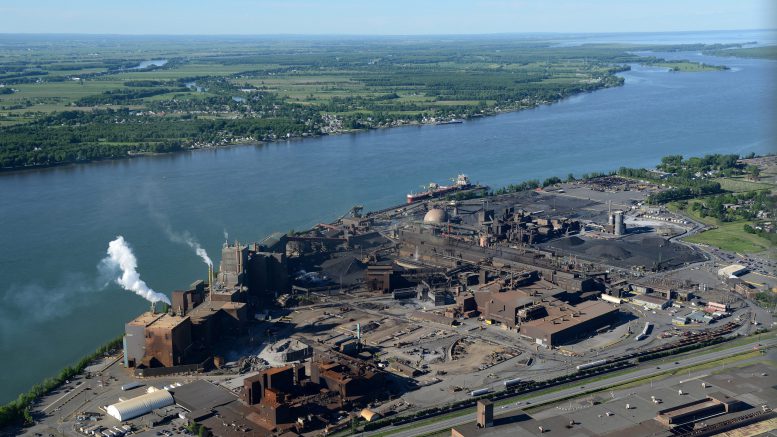Rio Tinto (NYSE: RIO; LSE: RIO; ASX: RIO) is investing up to $515 million over the next eight years to decarbonize its Fer et Titane (RTFT) operations in Sorel-Tracy, Que. and to help diversify its critical minerals portfolio, while the federal government will contribute up to $222 million to the initiatives.
The partnership, worth up to $737 million will support innovations to reduce by up to 70% the greenhouse gas emissions from RTFT’s titanium dioxide, steel and metal powders business, Rio Tinto said in a news release on Monday.
About $515 million of the total investment will come from Rio Tinto, media relations director Simon Letendre said in an email. The federal government will invest up to $222 million over the next eight years through its Strategic Innovation Fund (SIF) to support the diversification of RTFT’s portfolio as a North American supplier of critical minerals for electric vehicles, 3D printing and aerospace.
Rio Tinto CEO Jakob Stausholm said in a statement that the company is committed to supporting a net-zero future.
“We are excited to collaborate with the government of Canada to position RTFT for the future and strengthen the critical minerals and metals value chains in Canada and the United States,” he said.
Prime Minister Justin Trudeau said that good middle-class jobs, clean air and “made-in-Canada” technology is part of the country’s vision for a strong economy and future.
“Today’s announcement is about delivering on that vision and positioning Canada as a leader in critical minerals – a key part of things like electric vehicles. Together, we will continue to innovate, create good jobs, and keep our air clean,” Trudeau said.
BlueSmelting
The partnership will also support Rio Tinto’s BlueSmeling project, an ilmenite smelting technology for making high-grade titanium dioxide feedstock, steel and metal powders that could cut 95% of greenhouse gas emissions compared to RTFT’s current reduction processes.
A demonstration plant is under construction at RTFT to test the BlueSmelting technology and it is expected to be completed in the first half of 2023.
Once operational, Rio Tinto said it could potentially reduce up to 70% of RTFT’s overall greenhouse gas emissions, or the equivalent of 670,000 tonnes of CO2.
Scandium production
Also enabled by the partnership will be an increase in the production of the critical mineral scandium, of which Rio Tinto said it became the first North American producer in April this year at its Element North 21 demonstration plant . The mineral is used in solid oxide fuel cells and aluminum alloys.
The company plans to quadruple production capacity to reach up to 12 tonnes of scandium oxide per year, up from current capacity of three tonnes, by adding new modules to the existing plant that extracts high purity scandium oxide from the waste streams of titanium dioxide production.
The $30-35 million project is slated to begin producing scandium oxide in 2024.
Cleaner titanium process
In addition, Rio Tinto will add titanium to its output portfolio by joining with other titanium industry producers to advance a new process for extracting and refining titanium, a silver metal used in medical, aerospace and automotive industries.
Rio Tinto will build a pilot plant at the RTFT metallurgical complex to validate the process which it said requires no harmful chemicals and doesn’t generate direct greenhouse gas emissions.
The plant, expected to be completed by the end of 2023 could potentially “greatly increase” the production of raw titanium in North America while strengthening the security of supply of the critical mineral for Canadian and American manufacturers, Rio Tinto said.


Be the first to comment on "Rio Tinto in $737M decarbonization and critical minerals production push"